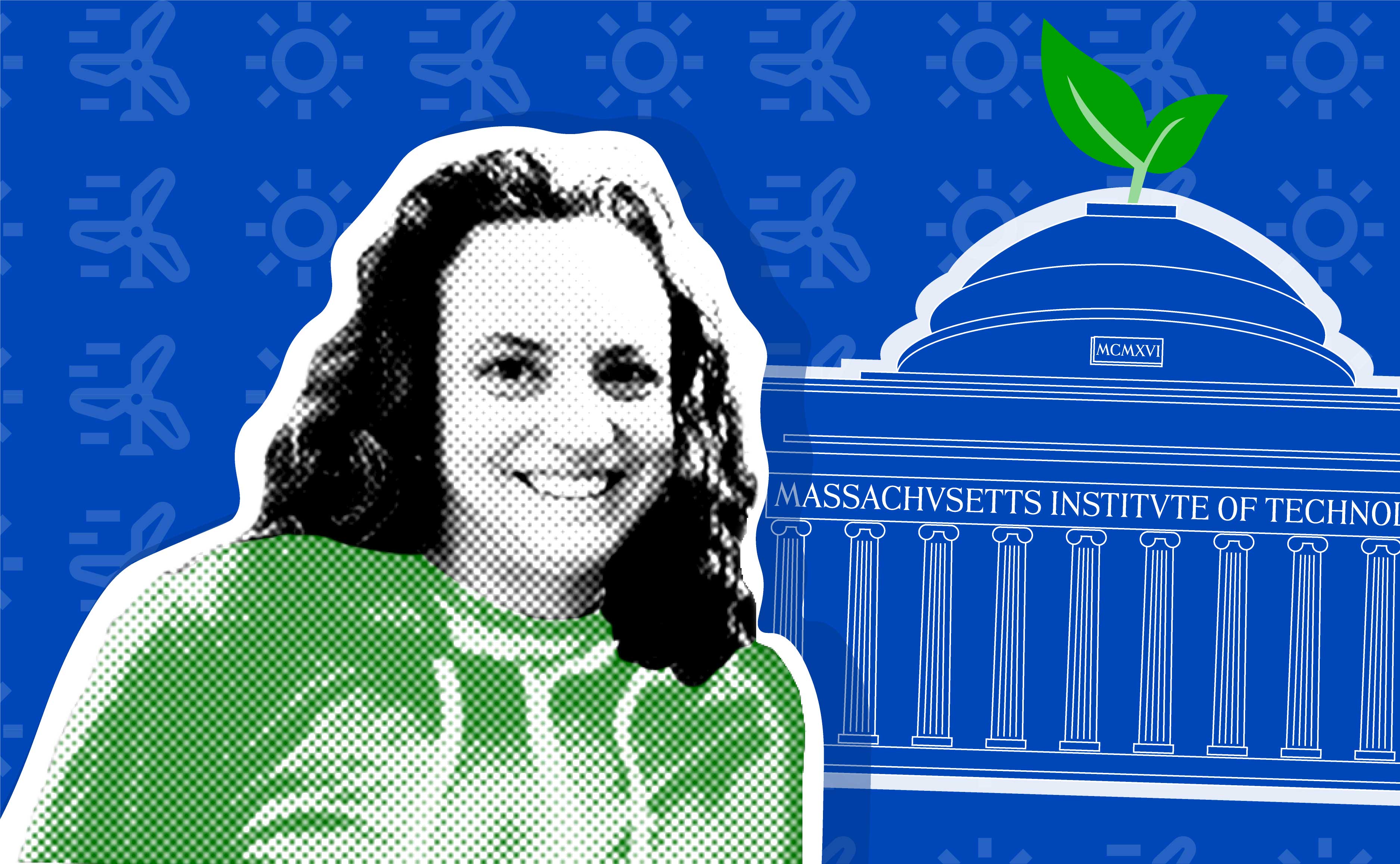Sustainability at the Core of the MIT Curriculum
-
-
Slice of MIT
Filed Under
More sustainability education? That’s not a tough sell to the MIT campus community—at least not in theory, says Sarah Meyers MBA ’12.
“But it’s difficult because it’s change,” she says. “You have to coordinate across different groups of people who may have competing interests. It can be time-consuming, and time often equals money. The question is how to do it.”
Negotiating the “how” of incorporating sustainability into MIT’s curriculum is Meyers’s job as the education program manager for the Environmental Solutions Initiative (ESI), which was created in 2014 to marshal the broad capacity across the Institute to address climate change and other environmental challenges. ESI plays an active role in implementing MIT’s Climate Action Plan, a recently updated map for how the Institute will contribute to global progress toward net-zero carbon emissions while helping humanity adapt to those effects of climate change that cannot be prevented.
Meyers was hired to oversee ESI’s education programs not long after she’d studied at MIT herself, as a grad student rebooting her career after 10 years of teaching math at Boston-area high schools. She became one of the first recipients of the MIT Sloan MBA program’s Sustainability Certificate, which tapped into her connection to nature and the environment, stemming from her outdoorsy California childhood and deepened throughout her adult years as she filled her leisure time with paddle boarding, kayaking, rafting, and hiking.
Like ESI itself, the education programs Meyers now oversees are interdisciplinary. These include a minor in Environment and Sustainability, open to undergrads of all majors, and a series of efforts to infuse sustainability into the curriculum of all MIT departments.
The sprawling landscape of “sustainability” can frustrate incoming students, says Meyers, who mentors students who are considering or pursuing the minor. “I think this up-and-coming generation takes these kinds of challenges personally,” she says. Climate change “isn’t an abstract fear. They see it happening in the world around them, whether in their hometown or in the news, and a lot of them feel like it’s their responsibility to do something to stop it.” But there’s a flip side: “When students know that there are many ways to attack this, it gives them the freedom to choose what they’re most interested in.”
Eighteen students have completed the minor since its 2017 inception; 25 more are currently enrolled. Among its alums are a chemical engineer writing her PhD dissertation on scope three emissions, an employee of a clean-energy nonprofit, an architect doing sustainable building design, and a biological engineer tackling pharmaceutical waste. And one of Meyers’s favorite examples: the alum who walked into an interview for a job with no ostensible environmental angle, shared her passion for sustainability, and was hired to make the company’s operations greener.
Even with the minor’s flexibility, Meyers knows not all students will shape their studies around sustainability. That’s why infusion is a major tenet of her team’s work, with a particular focus on incorporating sustainability into mainstream and foundational classes that MIT students must take.
It’s here that Meyers most often encounters the friction of change. Instructors must cover considerable ground in these core subjects and may be hesitant to add additional content. Or they may simply not see how sustainability fits in, or they lack the bandwidth to reinvent a longstanding syllabus.
Meyers works with faculty and teaching staff to surmount these obstacles. She has obtained grants to compensate their work on these adjustments, and she consults on course redesign. During Independent Activities Period, she and fellow ESI postdoctoral associate Liz Potter-Nelson led a workshop outlining different approaches to teaching with sustainability. One tactic is to use environmental information to illustrate basic concepts—like using real-world data for declining animal populations in p-sets on differential equations. Another is to reshape the course’s objective—for example, focusing an intro to thermodynamics class on clean-energy applications rather than combustion engines. Teachers are also encouraged to use instructional styles that build competencies important in sustainability work, like systems thinking, social justice, and active citizenship.
Meyers is the first to admit that infusing sustainability into existing courses is complicated. But as she and her colleagues help this change take root at MIT, she’s pondering how to share their takeaways with other educational institutions. She’s leading the development of a new public website called SCALES, which will organize all sustainability-related course materials developed at MIT, and she hopes eventually to create a fellowship program for professional development in this area.
Meyers can easily describe her path to the ESI role in terms of professional fit. Math, teaching, an MBA, and consulting with nonprofit organizations on business strategy―all prepared her for this job. But the students she advises aren’t the only ones who take environmental issues personally. When headlines about climate change alarm her, she often turns inward, reckoning in her writings with how concepts like scarcity, abundance, want, and gratitude shape her life choices and impact on the planet.
“These questions that I ask myself on a personal level bleed into my values for what I decide to do for work,” she says. “Part of the reason I love this job is that the people I get to work with are fascinating, creative, and driven people—and at some level, I think, they’re driven for the same reasons I am.”
Learn more about the Environmental Solutions Initiative.
Photo illustration: Gretchen Lambert / photo courtesy of Sarah Meyers.









